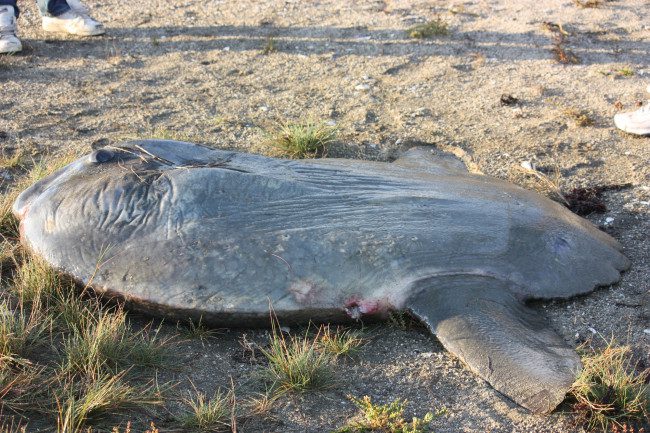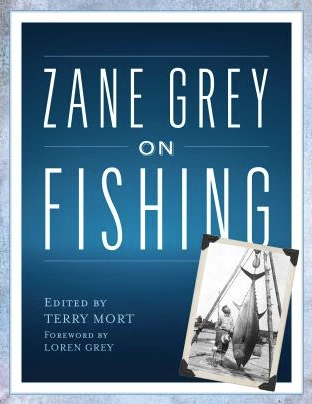I was leaning forward to splash some saltwater on my face when a huge dorsal fin flashed in the corner of my eye.
The mid-August day sucked the life out of me. It wasn’t so much that the temperature was hot but that the humidity was off-the-charts brutal. Add to it the fact there wasn’t a breath of air anywhere, and I figured I might as well be living in a sauna.
Summer temperatures on the Cape Cod coast are supposed to be warm, but this 92 degrees combined with 100 percent humidity was unbearable. In a typical year, I rely on ceiling fans to keep the heat at bay, but today I wished I was visiting my friends in Georgia and in Houston. They had hotter heat and equal humidity, true, but they also had air conditioning.

Save for a motorcycle, a Jeep in the summer is about as cool as it gets. (Photo: Tom Keer)
And so it was with great haste that I walked outside just before sunset. I knew there wasn’t a chance of getting a peaceful night’s sleep, so why bother tossing and turning all night when I could be a night stalker outside? Any hint of a breeze would come near the water’s edge when the tide turned, so that’s where I went. I might even catch a striped bass or two where the flat dropped off the channel edge. By 3 a.m. I’d be so tired I could fall asleep anywhere, so I tossed my gear in the Jeep.
Save for a motorcycle, a Jeep in the summer is about as cool as it gets. Mine had neither top nor doors, and a month earlier I unscrewed the windshield bolts to lay it flat on the hood. The inline four-banger went fast enough, and in a few miles I was as refreshed as if I had just stepped from my outside shower. Almost.
That sense of refreshment ended when I turned down the dirt road to get to the channel. The tree canopy was thick, and black flies and mosquitoes were everywhere. On the floorboard to the left of the clutch pedal was the headlights’ high-beam button, and I stepped on it. I goosed the accelerator and did my best to avoid the potholes, some of which threatened to pitch me out of the rig. It was good ’cause I left the bugs behind.
The water was flat calm, the setting sun shimmering on a few ripples that washed over the sandbar. Normally I’d wet wade, but the warm water brought jellyfish. The small, white jellies were innocuous, but the red ones were to be avoided. Those red blobs are lion’s mane jellyfish that extend long strings of stinging tentacles in order to capture their prey. The sting burns until you rub your skin with beach sand, so it’s an annoyance. Today was the day to avoid that kind of nonsense.

When it’s too hot to rest, go fishing. (Photo: Tom Keer)
Strict conservation practices over the past few decades have replenished the depleted horsehead and harbor seal populations, which in turn spiked the numbers of great white sharks. It didn’t help that this summer marked the 40th anniversary of the movie Jaws, but I wasn’t going to go too deep.
The wind kicked up by the time I waded out to the channel edge. The tide was coming in now, and I felt the current moving against my legs. Silversides sprayed out of the water, and when they do there is a predator underneath mopping up the others. I cast and mended, cast and mended, and then my line went tight.
You can get a sense of how big a bass might be based on their fight. This one bent my rod over, but there wasn’t a run. It had to be a schoolie; I brought him in, grabbed him by the lower lip and tossed him back into the drink.
I was leaning forward to splash some saltwater on my face when a huge dorsal fin flashed in the corner of my eye. I switched my head and saw nothing. Everyone knows the complexity of night vision. When you look at something directly you can’t see it; look askance and it’s clear as a bell. I didn’t see the fin again.
Had I really seen it at all? Or was it so hot that I saw an ocean mirage? I looked directly at the seam and saw nothing. The tide was rolling, and I was waist deep. I moved back into shallower water, then back some more, and made a cast.

“Jaws.” Sort of. Not really. (Photo: Tom Keer)
The line hit the water, and there it was again! It was the fin again, as seen from the corner of my eye. I turned and sprinted towards shore, moving as fast as a man wearing waders in waist-deep water can. I waited for what shark-attack survivors describe as a rush of water that pushes forward the moment before razor-sharp pearly whites pierce skin. By now I was in ankle-deep water, but the bite never came.
Later the next day I found my “shark” washed up on shore. An ocean sunfish, a few hundred pounds worth of tailless body that, when you touch the flesh, trembled like a bowl of Jell-O. It got too high up in the eel grass beds next to the salt cord grass to suck in white jellies and missed the tide. Sunfish turn on their side to feed and return upright to swim. That was the dorsal I saw . . . then lost . . . then saw again.
Mountain lions in Colorado, timber wolves in Minnesota, and white sharks on the Cape. We all have our predators, and they make us feel like fresh meat. But none bear the face of an old man like my sunfish. And none carry a fin that, while terrifying to see at night, carries no harm. None at all.
 This book is a selection of some of Grey’s best work, and the stories and excerpts reveal a man who understood that angling is more than an activity–it is a way of seeing, a way of being more fully a part of the natural world. No writer exceeds Zane Grey’s ability to integrate the fishing experience with a world he saw so vividly. Buy Now
This book is a selection of some of Grey’s best work, and the stories and excerpts reveal a man who understood that angling is more than an activity–it is a way of seeing, a way of being more fully a part of the natural world. No writer exceeds Zane Grey’s ability to integrate the fishing experience with a world he saw so vividly. Buy Now
